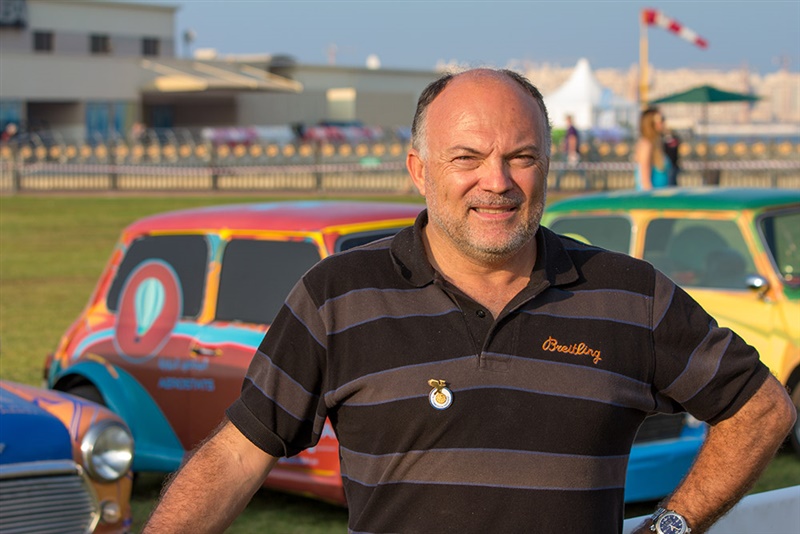A view from the FAI Environmental Commission
Writing about environment in a huge, desert city born out of oil and gas history can be a challenging task - if you only look backwards.
There is no doubt that the level of comfort and the fantastic infrastructures here come at a price. The high level of fossil energy needed to start the process and run the day-to-day operations cannot be viewed lightly.
But just like when an airplane takes off, the sheer power needed during the initial acceleration phase and the climb to altitude should throttle down for long-distance cruising.
There is no doubt that Dubai is looking to base its future growth on other pillars than its current oil and gas production. Tourism and aviation is fully part of the plan, and it shows.
 These FAI World Air Games 2015 in Dubai give us the opportunity to explore another side of what we previously called the FAI Environmental Commission missions: how can our activities better integrate into our environment, and how do we respect and attract our non-flying neighbours?
These FAI World Air Games 2015 in Dubai give us the opportunity to explore another side of what we previously called the FAI Environmental Commission missions: how can our activities better integrate into our environment, and how do we respect and attract our non-flying neighbours?
First, let us consider the settings. The Palm Dropzone is a uniquely positioned runway in front of one of Dubai's most spectacular skylines, and easily accessible by metro and bus from anywhere in the city - even if locals may currently prefer to use their private cars.
Helicopters and turbine-powered aircraft climb to jumping altitude over water circuits, without interfering with urban life.
The Beach Dropzone demonstrates how we can integrate our smallest footprint activities like precision paragliding (where pilots are towed to an altitude of about 300ft for a brief flight to the landing area) on a "normal" beach and without causing any nuisance to neighbours.
The Desert Dropzone and remote-controlled aircraft Zone are situated much farther into the wild. The former provides a runway, hangars, parachutes and teams preparation rooms, landing zone, wind tunnel and more - to please the parachutists and aviators alike.
With green pasture and running water in the desert sands, it may not be the clearest example of natural resources protection. But on the trip to go there, past the camel market and racetrack, you can see the absence of locals necessary for high frequency flights and training.
The latter, although nicely arranged for WAG 2015, is a more basic facility with a 300m runway where you can hardly be heard by anybody when flying over the sand. Just watch out for the power lines nearby if you really fly low with your ultralight or big R/C model.
So, are these games a model in term of compliance with the new rules of a warming world? They cannot be, simply because all geographical areas do not have the same characteristics and history.
But do these games demonstrate how to develop our activities in peace with our neighbours while showing the best of us? You bet!
Let us hope that when WAG is back in the region we can make the most of the bright, local sun to power some of our flying equipment!
By Pierre Duval, President of the FAI Environmental Commission
Photo: Marcus King/FAI Media Team
Discover the FAI World Air Games 2015
>Facebook: www.facebook.com/airsports.fai
>Twitter: www.twitter.com/airsports_fai
>Flickr (hi-rez images free to use): www.flickr.com/airsports_fai/albums
>Sign up for our daily newsletter: www.goo.gl/nBbsae

